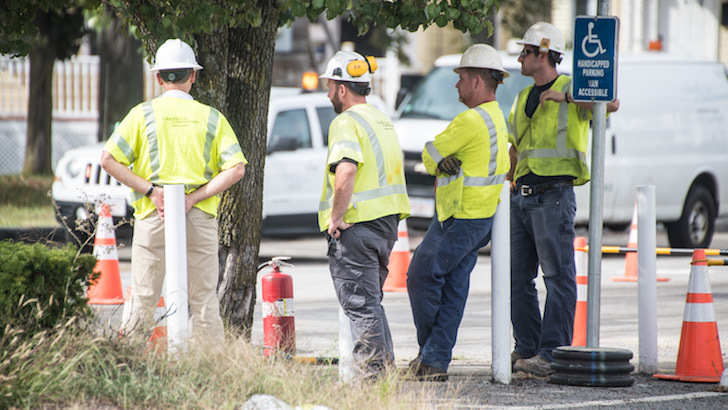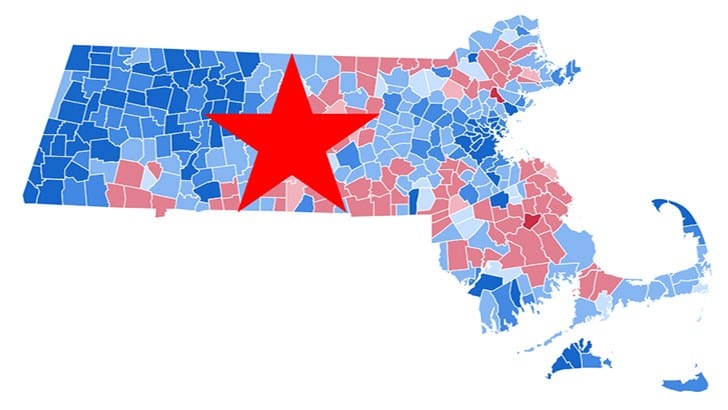
And keep it up through the hard times to come
November 21, 2018
BY JASON PRAMAS @JASONPRAMAS
It’s Thanksgiving this week. More correctly the National Day of Mourning. A holiday fraught with contradiction, as I’ve written repeatedly in the past. And what is one to make of it? Originally an opportunity for the descendants of the European colonists who seized Massachusetts—the country it eventually sat within, and the continent that surrounds it—from Native American nations through a combination of deadly diseases, grand theft, and genocidal violence to celebrate their good fortune. Now one of a number of nearly indistinguishable chances throughout the calendar year for (most, not all) people to take a day off from work, eat too much food (often prepared courtesy of women’s unpaid labor), drink too much alcohol, watch sports on TV, and maybe catch up with friends and extended family in the margins somewhere.
Once a harvest festival inaugurated by a Christian theocracy, it has morphed into a secular affair. Though its nationalist overtones remain strong. Nevertheless, it kicks off a period of the year—however commercialized—where people are encouraged to think about other people. To talk to each other, and to give each other gifts.
So, Turkey Day is as messed up as the warmongering capitalist republic it celebrates. But it does bring out some good behavior in Americans that I believe should be encouraged. An attitude that continues through to another secularized Christian holiday, Christmas, and beyond to a hopeful and libidinous New Year’s Eve.
Which is why it’s a fine time of year to make a few suggestions of things readers can do to make the world a better place. Whether you’re religious or not, and regardless of your politics… or lack thereof.
Help Someone Less Fortunate Than Yourself
I’m talking on an individual level here. One on one. You’re walking down the street. You see a homeless person. You see a hand being held out in supplication. So, give that person some money. Some food. Some coffee. Whatever they need in the moment. Look that person in the eye. Talk to that person. That fellow human being in need in front of you. A person you may have passed by a dozen times without raising your gaze from the sidewalk. Maybe ask a question or two. Think about the circumstances that resulted in that person ending up on the street. Then reflect upon how you might help build a society that will not allow anyone to lose their home to begin with.
Volunteer
Now help a bunch of people. For a couple hours a week or a couple hours a month. Donate your time, labor, and experience. Give a workshop at a local school on something you’re passionate about. Work in a homeless shelter. Build a community garden. Visit with folks in a nursing home. After a fashion, mull over how much can be done outside a system of market transactions. Look for ways to network volunteer efforts together into a front for social betterment.
Donate to Charity
Finding a nonprofit organization that really does the good work it says it does can be tricky. So, ask around. Check the news media for background. Go to the website of any organization that looks decent and read some of the group’s materials. Your basic litmus test should be whether the charity in question spends most of the money it raises in the service of its chosen community of interest. Groups that do that are generally worthy of your support. Donate annually… or, and I say this as someone who runs a nonprofit alongside a commercial newspaper, donate monthly. Keep it up as long as you can. And if you can afford it, give to many solid organizations. Set a percentage of your income to devote to good works and give that sum consistently. Note the power of giving, and think about how to expand the gift economy to become the dominant mode of exchange.
Day of Service
Too late a plan for this year, but in the years to come try converting your Thanksgiving from just party time into a time to both party and help others. Tell your friends and family that you’re going to spend part of the day helping people in need in your community, and invite them to come along. Over time, this could become a tradition. And the more personal networks that do it, the more the idea will catch on. Not that such a service day is a new notion. But it is something that could stand to be spread nationwide. Perhaps supplanting the current majority view of the holiday at some point. Inspiring many people to make such activities part of daily life—and ultimately baking them into our culture.
In closing, I make these suggestions for what I consider to be obvious moral reasons. But also for reasons as political as anything I’ve ever written. Because we’re entering what may well be the most difficult period that the human race has ever faced. And if our species is going to survive and thrive in the decades to come, it will be thanks to simple human solidarity. Based on the kind of actions I suggest above at base.
And if humanity is going to stop genocides like the one that was committed against Native Americans—and far too many other groups of people since—from ever happening again, such solidarity is not optional. It is essential.
Apparent Horizon—winner of the Association of Alternative Newsmedia’s 2018 Best Political Column award—is syndicated by the Boston Institute for Nonprofit Journalism. Jason Pramas is BINJ’s network director, and executive editor and associate publisher of DigBoston. Copyright 2018 Jason Pramas. Licensed for use by the Boston Institute for Nonprofit Journalism and media outlets in its network.


![Photo by Brad Fagan (IMG_0119) [CC BY-SA 2.0 (https://creativecommons.org/licenses/by-sa/2.0)], via Wikimedia Commons](https://digboston.com/wp-content/uploads/2018/10/Boston_2017_Womens_MarchIMG_0119_32389345611-1024x683.jpg)





